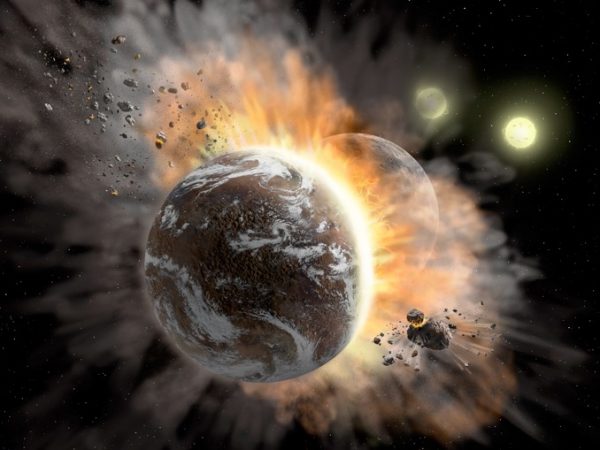Telltale signs of a planetary collision in binary star system – Astronomy Now Online

Just like debris littering the roadway is a telltale sign of a recent auto crash, what appears to be the wreckage of a planetary collision has been spotted in a binary star system more than 300 light years from Earth.
Using the Stratospheric Observatory for Infrared Astronomy, or SOFIA, researchers have found swirling clouds of warm dust around the two stars catalogued as BD +20 307, not the cooler material one would expect in a billion-year-old star system.
The infrared-sensitive Spitzer Space Telescope first noticed the clouds 10 years ago, hinting at an exoplanet crash. The new SOFIA observations show the brightness of the dust has increased by more than 10 percent since then, indicating even more warm dust than previously expected.
The observations indicate a collision between two rocky exoplanets may have occurred in the relatively recent past.
“The warm dust around BD +20 307 gives us a glimpse into what catastrophic impacts between rocky exoplanets might be like,” said Maggie Thompson, a graduate student at University of California and the lead author on a paper in The Astrophysical Journal. “We want to know how this system subsequently evolves after the extreme impact.”
Planets are thought to form when dust particles around young stars combine and grow over time. As star systems mature, left over particles continue colliding, breaking apart and becoming small enough to either be pulled into a star or ejected into deep space. Warm dust clouds around older stars like the sun and BD +20 307 should have long since cooled and disappeared.
“This is a rare opportunity to study catastrophic collisions occurring late in a planetary system’s history,” said lead investigator Alycia Weinberger, a researcher at the Carnegie Institution for Science’s Department of Terrestrial Magnetism in Washington. “The SOFIA observations show changes in the dusty disk on a timescale of only a few years.”
While other mechanisms could explain the bright glow seen around BD +20 307, they are not likely to happen in just a single decade. A planetary collision is a better fit, but the team plans additional observations to collect more data.





